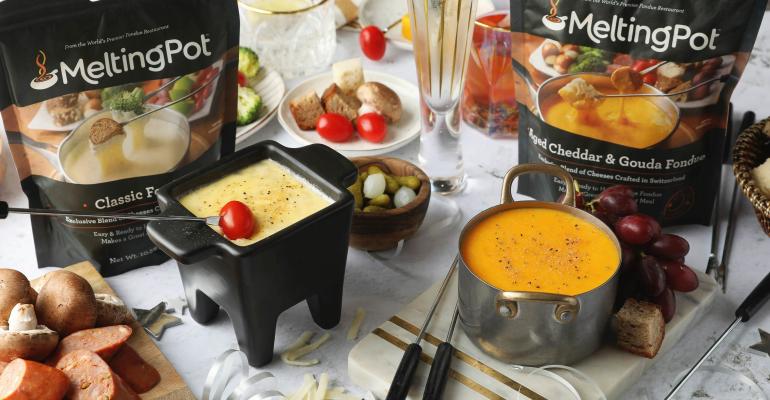Here at Nation’s Restaurant News, we like to keep a strong pulse on data points and often believe that three such data points sometimes make a trend. Of course, “trend” can be used flippantly when it comes to this monolithic industry, so “moment” or “fad” could work in most instances.
That said, one such fad that has generated three data points of late is “at-home meal kits,” introduced by quick-service and casual dining giants alike.
Consider Taco Bell, which recently introduced two Cravings Kits to make Crunchwrap Supremes or Chipotle Chicken Quesadillas at home. The kits are each available for $7 and exclusively at Walmart stores or on Walmart.com and were created alongside Kraft Heinz, which became Taco Bell’s primary retail manufacturer in October. The two companies also recently launched an SOS Kit, designed to provide college students with the supplies needed to create the brand’s menu at home. Each kit contains a variety of Taco Bell at Home products, including Fire and Diablo sauces, as well as “spill-and stain-resistant bed sheets so students can eat from the comfort of their own beds.” This added touch certainly feels on brand for a company that launched its own hotel and resort in Palm Springs, Calif., among many other discussion-worthy campaigns.
Then, there’s The Melting Pot, a nearly 50-year-old fondue concept that is just now adding a do-it-yourself fondue kit delivered straight to customers’ homes. “Melting Pot at Home” includes the option to add Omaha Steaks dippers – including tenderloin tips, shrimp, boneless chicken, boneless pork chops, meatballs and kielbasa sausages – as well as a classic fondue option and an aged cheddar and gouda fondue.
"Melting Pot is all about creating shareable moments, but we understand that guests cannot always make it into our restaurants, so we wanted to bring the craveable fondue experience to them," CEO Bob Johnston said in a statement.
And finally White Castle; no stranger to quirky campaigns, the company is now offering a “Love Kit,” billed as a “new at-home Valentine’s Day experience.” The kit includes Sliders, a scented candles and “Craventines” cards to “recreate the White Castle dining experience at home.”
Of course, meal kits are nothing new and we witnessed their proliferation prior to and during the pandemic. Blue Apron went public in 2017, for instance. We even saw restaurant brands like Chick-fil-A experiment with meal kits all the way back in 2018, while several other joined the fray in 2020 because the industry was in dire need of any revenue lifelines during that period.
But these latest iterations are different – equal attention to the meal components as the branding. A deeper focus on, as White Castle puts it, “recreating its dining experience at home.” This goal has become critically important as delivery and takeout is unquestionably here to stay. Translating that dine-in experience at home doesn’t have to be over-the-top with spill-resistant sheets or scented candles, however.
In fact, we’ve talked to dozens of concepts, from Pepper Lunch to Cote Korean Steakhouse to Firebirds Wood Fired Grill, about how they’re trying to bring some of their strong dine-in experience to off-premises. It’s not easy. In fact, it’s probably impossible. But with a deep infusion of what makes these brands who they are and a better understanding about what’s important to the off-premises customer, it may be closer than ever. For the Melting Pot, that means an aged cheddar and gouda fondue. For Pepper Lunch, it’s testing a rotating kennel wok. For Firebirds, it’s investing in “Tupperware-like” packaging. The point with these meal kits, or delivery innovations in general, is to capture customers wherever they are and to keep their experiences with your brand as consistent as possible in the process.
Contact Alicia Kelso at Alicia.Kelso@informa.com





